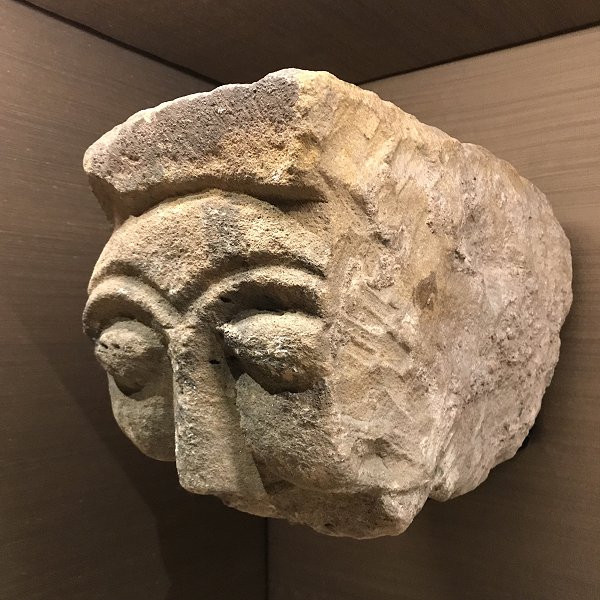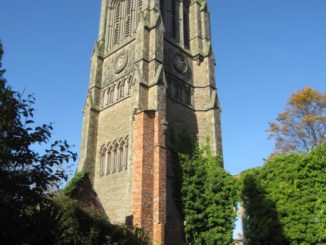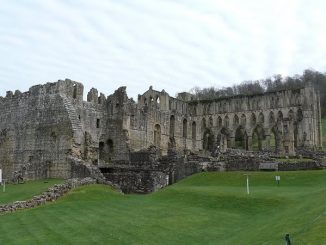
Bran Stoker’s Dracula was published in 1897, but over 120 years later visitors still flock to the little seaside town of Whitby in North Yorkshire to see what inspired the writer to pen his iconic tale and the real life references Stoker used.
One of the most well-known references is, of course, the 199 steps that lead from the town itself up to St Mary’s Church on the headland and, next to it, the majestic ruins of Whitby Abbey. Today a visitor can walk up those same 199 steps, worn and pitted from tens of thousands of footsteps, after fish and chips by the harbour and a wander around the narrow streets (and possibly a visit to the Dracula Experience).

Whitby has been inhabited for thousands of years; being situated on the mouth of the River Esk means that its fortunes have always been bound up with the sea. In the excellent English Heritage visitor centre next to the Abbey, you can see items owned and used by the very earliest inhabitants of the headland back in the late Bronze Age, by the 7th century Anglo-Saxon religious community, and the post-Norman Conquest Benedictine abbey.

The Anglo-Saxon religious community was founded by St Hild of Whitby in about 657 AD. Hild was a great-niece of King Edwin of Northumbria, one of the seven Anglo-Saxon kingdoms in England, and several members of the Northumbrian royal family would be buried in Whitby.
Hild was revered as a teacher, adminstrator, and influencer; “a light in the Dark Ages”. No doubt being descended from a king helped her establish and effectively govern her religious community, but she was also renowned for her energy, kindness, intelligence, and wisdom, counselling kings and peasants alike. Her community at Whitby produced a number of highly influential individuals, including the poet Caedmon, John of Beverly, Bishop of Hexham, and Wilfrid, Bishop of York.

In the 7th century, there were two almost competing strands of Christianity in England: Celtic and Roman. They had fundamental differences in organisation (the Celtic tradition, which Hild had been trained in, emphasised the importance of religious communities and the authority of the abbot or abbess locally, while the Roman tradition emphasised a more centralised structure of cathedrals and bishops), liturgy, and how the date of Easter was calculated.
This was a time where religion, politics, and power were very much intertwined, as they would be for centuries in England, and King Oswy of Northumbria, mindful of the importance of consolidating these two competing traditions, asked Hild to convene the Synod of Whitby in 664 AD, a major turning point for Christianity in England. The Roman traditions were eventually adopted, after much debate, and would remain the dominant traditions in England until the 16th century.

Hild died in 680 AD. By the 9th century, the religious community had gone, probably as a result of Danish raids, and the Anglo-Saxon town had been replaced by new settlers. A new community was founded by a monk called Reinfrid around 1078 AD. The monastery church was rebuilt in the 13th century, with additions in the 14th and 15th centuries.
The end of the abbey as a religious community came in 1539, after King Henry VIII decided to solve the problem of the Pope refusing to dissolve his first marriage by breaking away from Rome. The Roman Catholic Church was also a powerful and wealthy landowner in England, and with the Dissolution of the Monasteries Henry was able to confiscate and redistribute large amounts of lands and property for political gain, as well as marry his mistress, Anne Boleyn. A wealthy landowner, Sir Richard Cholmley, bought the abbey.

The remains of the abbey survived relatively intact until the 18th century but, weakened by wind and rain and lack of maintenance, it began to collapse from 1736. The central tower collapsed in 1830. More damage was caused to the west front when the headland was shelled by the German fleet in 1914, although this was later repaired.
English Heritage have done a great job of making the abbey accessible and food, drinks, and toilets can be found in and around the visitor centre and YHA hostel adjacent. A sightseeing bus runs to and from the town if you don’t fancy the 199 steps.
Whitby can be reached by train, bus, or car. If driving, the Park & Ride is highly recommended; it’s cheap, convenient, and runs on a very regular schedule throughout the day.







1 Trackback / Pingback